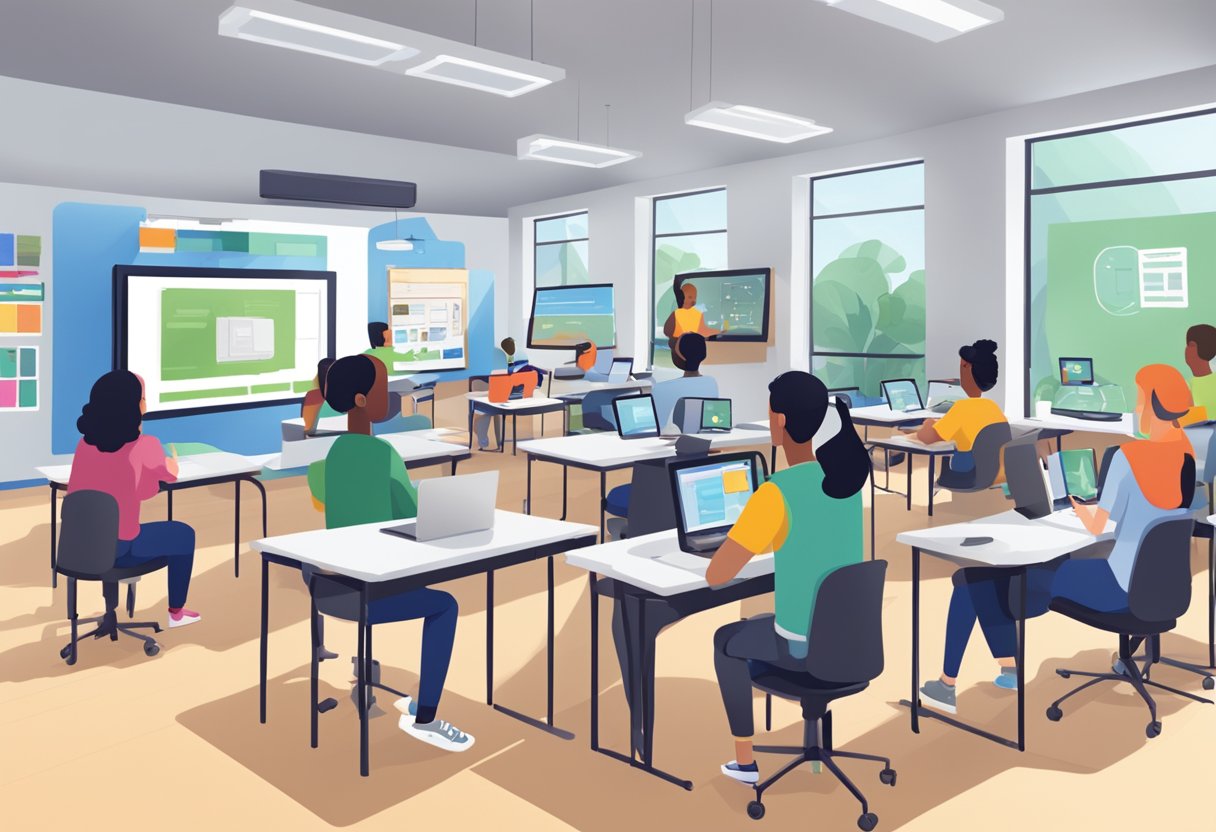Physical Address
304 North Cardinal St.
Dorchester Center, MA 02124
Physical Address
304 North Cardinal St.
Dorchester Center, MA 02124

The world of education has changed more in the past decade than it did in the last century. Gone are the days when classrooms were confined to four walls and a chalkboard. Today, interactive media—ranging from virtual reality and gamified lessons to real-time collaboration tools—has completely reshaped how students learn and engage online. For digital-native students, learning is no longer a passive experience; it’s an immersive, interactive journey that fosters creativity, curiosity, and deeper understanding.
The growing popularity of online education has given rise to a new kind of learner—one who values flexibility, instant feedback, and active participation. For many students balancing work, family, and studies, interactive media provides an ideal way to stay connected to lessons and peers. Yet, not every learner finds it easy to manage the demands of online coursework. Many often search for ways to stay on track or even ask if they can pay someone to do my online class on trusted MyAssignmentHelp.com, which offers expert academic support to help them learn effectively and meet deadlines. While online tools make learning flexible, services like these ensure that students never fall behind in their academic journey.
Interactive media has become a cornerstone of online education because it changes how students interact with course material. Instead of reading long PDFs or watching one-way recorded lectures, learners now engage with dynamic simulations, quizzes, and videos that respond to their inputs. Imagine studying history by walking through an ancient civilization using virtual reality or learning anatomy through 3D models you can rotate and explore. This level of interaction turns information into experience—a concept proven to improve memory retention and comprehension.
Platforms like Nearpod, Kahoot, and Google Classroom have brought this concept to life. They allow educators to build lessons that involve participation, immediate feedback, and gamified rewards. Students are no longer passive viewers—they become part of the learning process. Studies show that learners who use interactive media demonstrate higher motivation, longer attention spans, and stronger analytical thinking skills.
Modern students, especially those aged 17 to 35, belong to a highly visual generation. They’ve grown up with social media, video streaming, and gaming—all of which rely on visual stimulation and interaction. Education, therefore, must adapt to these habits to keep learners engaged.
Interactive videos, infographics, and micro-learning modules have proven particularly effective for today’s online learners. Instead of scrolling through monotonous text, students can now engage with animated lessons that explain complex concepts through relatable examples and visual cues. This form of learning not only keeps attention but also caters to diverse learning styles—whether auditory, visual, or kinesthetic.
Gamification is one of the most exciting developments in online education. By integrating game-like elements—such as points, badges, and leaderboards—educators can transform even the toughest subjects into enjoyable challenges. Students feel a sense of achievement and progress, which naturally motivates them to keep going.
Platforms like Duolingo and Quizizz have mastered this technique, making language learning and academic practice feel like a game rather than a chore. Similarly, online courses now include interactive exercises that encourage collaboration among peers. By turning learning into a rewarding experience, gamification bridges the gap between entertainment and education.
One of the main drawbacks of early online learning was isolation. Students often felt disconnected from their peers and instructors. Interactive media has effectively solved this problem through live chat features, collaborative whiteboards, and real-time feedback mechanisms.
Now, students can work together on group projects, share notes in real time, and even attend virtual breakout rooms that mimic real classroom discussions. This not only promotes engagement but also strengthens social learning—a process where students learn from one another’s insights and experiences.
Instructors, too, benefit from these tools. They can monitor progress in real time, identify learning gaps, and provide instant feedback. This two-way communication helps students correct mistakes early and stay motivated.
AI-driven interactive media has taken online learning to the next level. Tools powered by artificial intelligence can now personalize learning experiences based on a student’s strengths, weaknesses, and pace. Adaptive learning platforms use data analytics to recommend specific resources or adjust lesson difficulty dynamically.
For instance, if a student struggles with algebra, the AI system can provide extra practice problems or simplified explanations. On the other hand, high-performing students can be challenged with advanced topics. This ensures that every learner receives a customized experience, much like having a personal tutor available 24/7.
While interactive media has revolutionized education, it does come with its challenges. Not all students have access to high-speed internet or modern devices required to run advanced learning platforms. Additionally, the abundance of visual and interactive elements can sometimes distract rather than enhance focus. Educators must, therefore, design lessons that balance entertainment with education.
Moreover, maintaining academic integrity in online classes can be tricky. This is where reliable platforms like MyAssignmentHelp.com step in, ensuring that students get professional assistance when needed without compromising on learning quality. Students can seek guidance, proofreading, or conceptual help from qualified experts—allowing them to manage their workload effectively while staying on top of interactive learning experiences.
The future of education is clear—it’s digital, dynamic, and deeply interactive. As technology continues to evolve, so will the methods of engaging students. Virtual reality classrooms, AI tutors, and immersive simulations will become commonplace. The goal will not only be to teach but to create environments where learning feels like exploration.
Interactive media has already proven that education doesn’t have to be static or boring. It can be vibrant, personal, and rewarding. For students worldwide, this shift means more than convenience—it represents freedom: the ability to learn anytime, anywhere, and in ways that make the most sense for them.
So, the next time you log into your online class, remember—you’re not just part of a digital revolution; you’re part of a movement redefining what it means to learn in the modern world.